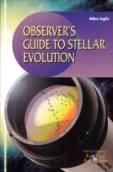Hear Dr. Paul Rybski, UWW Physics Dept., talk about “When fusion stops, what follows: The long retirement of stars as white dwarfs, neutron stars and black holes” on Fri., May 7 @8pm (Upham Hall 140), followed by public viewing at the UWW Observatory @9:15pm (weather permitting). It’s the last spring David Bertagnoli Memorial Lecture/Whitewater Observatory Lecture.
When stars initially greater than 8 solar masses end their lives in titantic explosions called supernovae, some if not all leave behind remnants unlike any stars visible today. Remnants between 1.4-4 solar masses are “neutron stars” we may observe as blinking objects (aka “pulsars“). Larger remnants are “black holes.” When smaller stars end their lives as faint but brilliantly-colored planetary nebulae, what is left behind are small remnants that radiate away the energy stored in their extremely compressed interiors over the rest of the life of the universe. Each of these objects produced by stellar evolution will be discussed, with an emphasis on how we know from observations that they exist.
 Like to learn more? Andersen Library can help! Search the HALCat online catalog for books such as Observer’s guide to stellar evolution: The birth, life, and death of stars (3rd-floor Main Collection, QB857.5.E96 I54 2003) and Through the eyes of Hubble: The birth, life, and violent death of stars (3rd-floor OVERSIZE Main Collection QB806 .N34 1998). Search article databases to find articles such as “Making black holes in supernovae” (Nuclear Physics A, 1996, vol. 606, pp.137-150) and “The most massive progenitors of neutron stars: CXO J164710.2-455216” (The Astrophysical Journal, 2008, vol.685, pp.400-405). Search the web for sites such as NASA’s “The life and death of stars.”
Like to learn more? Andersen Library can help! Search the HALCat online catalog for books such as Observer’s guide to stellar evolution: The birth, life, and death of stars (3rd-floor Main Collection, QB857.5.E96 I54 2003) and Through the eyes of Hubble: The birth, life, and violent death of stars (3rd-floor OVERSIZE Main Collection QB806 .N34 1998). Search article databases to find articles such as “Making black holes in supernovae” (Nuclear Physics A, 1996, vol. 606, pp.137-150) and “The most massive progenitors of neutron stars: CXO J164710.2-455216” (The Astrophysical Journal, 2008, vol.685, pp.400-405). Search the web for sites such as NASA’s “The life and death of stars.”
Please ask a librarian for assistance with finding materials.
